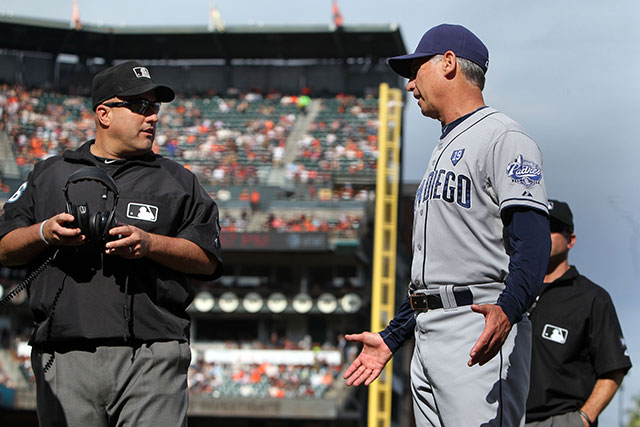MLB unveils pace-of-play rules, replay tweaks
 MLB games averaged 3.13 hours in 2014. That’s too long, some experts say. (USATSI)
MLB games averaged 3.13 hours in 2014. That’s too long, some experts say. (USATSI)
Major League Baseball wants games to move along more crisply and, as expected Friday morning, announced new rules in pace-of-game regulations and video replay etiquette. As our own Mike Axisa wrote Thursday night after broad sketches of the new rules leaked to Fox Sports, those changes include:
• Managers must challenge replays from dugout. No more slow walks over to umpires on the field in order to stall while team replay mavens check their TV monitors. MLB is making other replay tweaks as well, including adding an additional manager’s challenge for playoff games, regular-season tiebreakers and the All-Star game. Also: tag-up plays will be reviewable going forward. And no instant replay will be used in spring training this season.
• Batters must keep one foot in the batter’s box “unless an established exception occurs.” Exceptions include actions such as bunting, or when there’s a wild pitch, for example. This might be the most “invasive” of the changes, something batters will have to get used to.
• Play must resume promptly once a broadcast returns from a commercial break. To that end, timers will be installed in each ballpark to assist umpires in keeping everyone on task.
The new regulations were part of a joint effort among the league, the players association and the umpires union to help shorten the length of ballgames, which lasted about 3.13 hours in 2014 and, apparently, make everyone in North America too sleepy.
In a statement, commissioner Rob Manfred said:
“These changes represent a step forward in our efforts to streamline the pace of play. The most fundamental starting point for improving the pace of the average game involves getting into and out of breaks seamlessly. In addition, the batter’s box rule will help speed up a basic action of the game.”
One takeaway from all of this:
With the addition of physical timers “counting down” in each ballpark, we can be fairly certain that a “pitch clock” component will be added to the game in the near future. The upper levels of the minor leagues are experimenting with it in 2015, and with MLB already adding a clock to games to regulate pace coming out of commercial breaks, it’s just a matter of… time until the clock is used after every pitch in order to “keep the game moving.”
One would think that umpires would be able to keep the game moving just by concerted effort, but that’s not how MLB wants to do it.
MLB had been unique. Now it has a clock like other sports.
This entry passed through the Full-Text RSS service – if this is your content and you’re reading it on someone else’s site, please read the FAQ at fivefilters.org/content-only/faq.php#publishers.